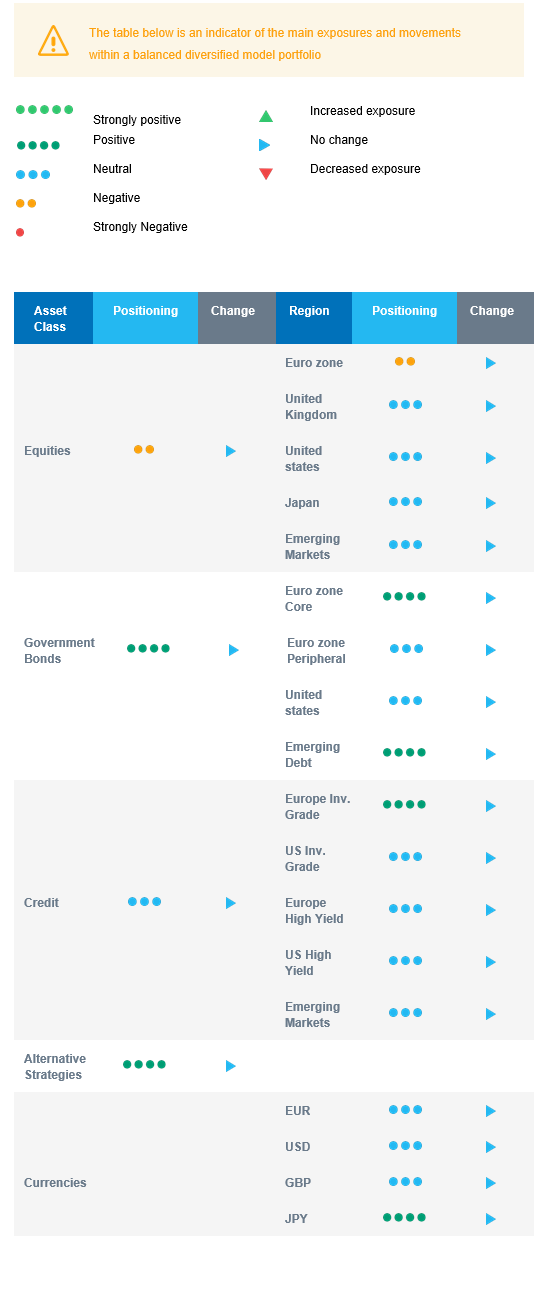Last week in a nutshell
- Nvidia's earnings and sales forecast overshadowed a hawkish tone in the Federal Reserve's recent meeting minutes.
- Minutes from the European Central Bank followed suit, indicating agreement regarding the risks of prematurely reducing policy rates.
- On the data front, preliminary PMIs revealed strength in services and easing manufacturing activity. The local IFO index confirmed that Germany remains the primary setback.
- Although Nikki Haley was on her home turf in South Carolina, Donald Trump won the first-in-the-South Republican presidential primary.
What’s next?
- ECB President Christine Lagarde’s speech and preliminary February data on the euro zone inflation will help investors weigh the odds of the ECB cutting rates prior to the Fed.
- Japan will also release its inflation and leading economic indicators data, a composite gauge of the economic outlook on job offers and consumer sentiment.
- In China, investors will pay attention to the PMI gauges taking into account the impact of the Lunar New Year holiday.
- GDP growth rates from developed and developing countries will shed some light on the divergent economic activity at the end of 2023 with publications from Turkey, Brazil, India, Canada, France, and the US.
- The week will wrap up with data from the US on a myriad of fronts: Core PCE, real estate, manufacturing and sentiment.
Investment convictions
Core scenario
- The last leg of the steady path from a 3% to a 2% inflation rate seems to be more bumpy in the US than in the euro zone. Overall, the growth / inflation mix is undeniably returning to “familiar” territory.
- Hence, a soft-landing/ongoing disinflation scenario in the United States remains our most likely scenario, implying no rush for the Fed to deliver monetary support. We don’t expect the first monetary easing before the end of the first semester, still leaving room for disappointments compared to current market pricing.
- 2024 should bring better visibility with a narrowing economic growth gap between countries while most central banks have restored room for manoeuvre.
- In China, economic activity has shown some fragile signs of stabilisation (4% GDP growth expected in 2024) while the evolution of prices remain deflationary.
Risks
- While uncertainty remains on the timing and on the conditions of the start of monetary easing, a downside risk would be too prudent of an approach towards monetary easing by central banks and a disappointed market.
- Geopolitical risks to the outlook for global growth remain tilted to the downside as developments in the Red Sea unfold. An upward reversal in the price of Oil, US yields or the US dollar are key variables to watch.
- A risk would be a stickier inflation path than expected which could force central banks to reverse dovish rhetoric. In our understanding, it would take more than just the bumpy data registered in January.
- Beyond commercial real estate exposures, financial stability risks could return as a result of the steepest monetary tightening of the past four decades.
Cross asset strategy
- Our asset allocation shows a relatively balanced approach as the equity risk premium is currently insufficient to encourage investors to reweight the asset class.
- We have the following investment convictions:
- We expect limited equity upside, and are looking for a better risk/reward and clearer signals to start to increase exposure. We keep a neutral allocation towards equity indices outside Europe, having a cautious view on euro zone equities.
- We look for specific themes within Equities. Among them, we like Technology / AI and also remain buyers of late-cycle sectors like Health Care and Consumer Staples. We look for opportunities in beaten down stocks in small and mid-caps or within the clean energy segment.
- In the fixed income allocation:
- We focus on high-quality credit as source of a pickup in yields.
- We also buy core European government bonds with the objective to benefit from the carry in a context of cooling inflation.
- We remain exposed to emerging countries’ debt to benefit from the attractive carry.
- We maintain a neutral stance on US government bonds, looking for a new, more attractive, entry point as we expect markets to revise their Fed outlook further down the line.
- We hold a long position in the Japanese Yen and have exposure to some commodities, including gold, as both are good hedges in a risk-off environment.
- We expect Alternative investments to perform well as they present some decorrelation from traditional assets.
Our Positioning
Our strategy takes into account the current backdrop, characterised by economic resilience in the US, the EU’s cautious recovery and the prudent approach towards monetary policy in both regions. This backdrop necessitates a patient approach to investment. Overall, we keep a neutral allocation towards equity indices outside Europe, with the latter region appearing bottoming out but still relatively less attractive than the rest of the world. In terms of sectors, we are constructive on the Technology, Health Care and Consumer Staples sectors. Within the fixed income segment, we continue to harvest carry via Investment Grade credit and Emerging Market debt while maintaining a long European bond duration.

